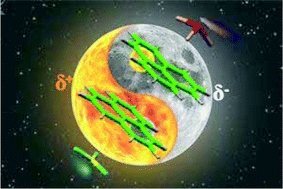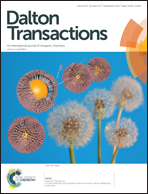Superatoms (Li3O and BeF3) induce phenalenyl radical π-dimer: fascinating interlayer charge-transfer and large NLO responses
Abstract
Recently, the well-known phenalenyl radical π-dimer with its fascinating 2-electron/12-center (2e/12c) bond has attracted our attention. In this work, we designed two molecules, Li3O⋯C13H9 (1a) and BeF3⋯C13H9 (1b). Interestingly, owing to the inductive effect of superatoms, an electron is transferred from Li3O to phenalenyl in 1a, while an electron is transferred from phenalenyl to BeF3 in 1b. Further, we employed 1a and 1b as building blocks to assemble two novel molecules with 2e/12c bonds: Li3O⋯(C13H9)2⋯BeF3 (2a) and Li3O⋯(C13H9)2⋯BeF3 (2b). Remarkably, 2a and 2b with novel 2e/12c bonds exhibit a dramatic interlayer charge-transfer character, which results in a significant difference of dipole moments (Δμ: 2.6804 for 2a and 3.8019 Debye for 2b) between the ground state and the crucial excited state. As a result, the static first hyperpolarizabilities (β0: 5154 for 2a and 12 500 au for 2b) are considerably larger than the values of 347 for 1a and 328 au for 1b. It is our expectation that the results of the present work might provide beneficial information for further theoretical and experimental studies on the fascinating properties of molecules with interlayer charge-transfer character.


 Please wait while we load your content...
Please wait while we load your content...